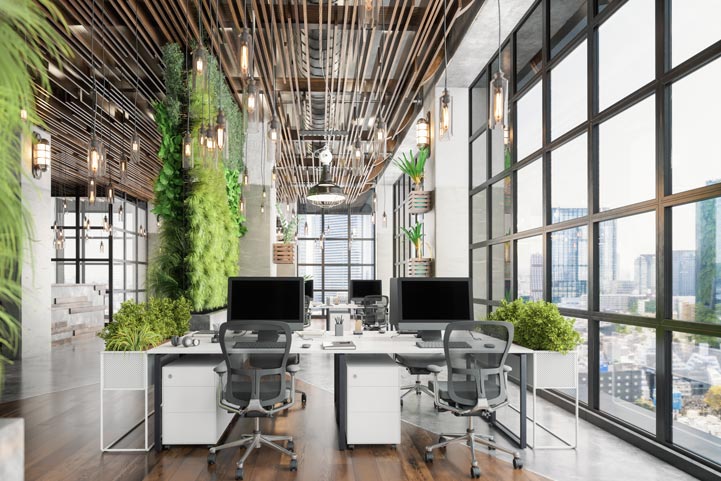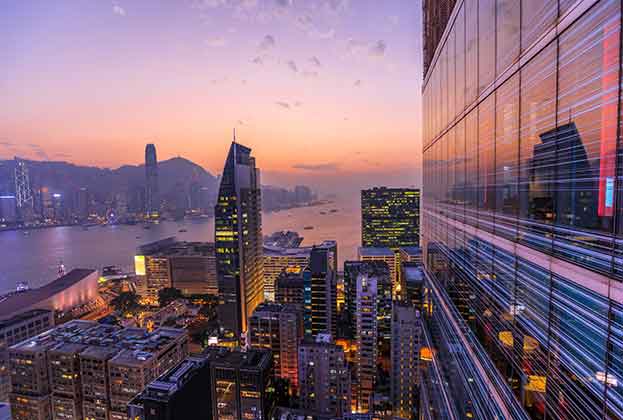Global differences and complexities around ‘green’ office space requires local knowledge
Global differences in what constitutes ‘green’ and varying levels of environmental legislation can make selection and reporting on space extremely complex. World Research spoke to four regional leaders in the office markets and sustainability research to understand regional differences and trends in sustainable office spaces.
- What constitutes ‘green’ in your market?
MS: In Australia, the most broadly applied environmental rating scheme is called NABERS (National Australian Built Environment Rating System). Ratings in this system are issued for Energy, Water, Waste and Indoor Environment. The ratings range from one (lowest) to six (market leading). In addition, we have the Green Building Council of Australia’s GreenStar rating system which operates in a similar manner to the US-based LEED building rating scheme. The understanding and use of these rating schemes have steadily increased over many years with developers, owners, occupiers and more generally across the real estate industry.
EW: In the Dutch market BREEAM is most common certification for green office space. We’re also seeing a growth in the WELL certification which is more focused on health and well-being from a user perspective. From 1 January 2023, offices in the Netherlands will need to have as a minimum energy label C, which is leading to a lot of focus on energy labels and implementing energy improvements from both an occupier and landlord perspective. This creates added complexity when considering long-term options.
WFB: I think it is fair to say LEED would be what constitutes green. For the most part, it is common to have buildings with some level of LEED. However, it’s important to distinguish between the perception of being ‘green’ and actual performance of the building. For example, a lot of LEED Platinum buildings in NYC were rated B or C and not an A based on the new building performance rating requirement for commercial buildings of certain size.
HR: The term “green” is not a well-defined one, which made this question tricky to answer. There are two components to being ‘green’ – environmental sustainability (measured by energy and water efficiency, waste management, carbon footprint reduction) and occupants’ health and safety (measured by air, water, acoustics, and lighting quality, and non-toxic materials and finishes). As CRE professionals and clients become better versed on what constitutes sustainability, we are seeing a trend towards certifications and frameworks that measure the performance of buildings that benefit environmental outcomes and occupants’ experience, beyond looking for LEED certifications (which is not a performance-based certification). For cities in the US with stringent building performance requirements (namely NYC, Washington DC, Boston, and Denver), the key basis is Energy Star score which needs to be re-evaluated every year. We are also seeing preference for performance measurement over certification for the sake of having one.
- Are tenants willing to pay a premium for green office spaces? What sort of premium can they command?
MS: Yes most tenants certainly have an environmental conscience when making their real estate decisions. We don’t see that tenants want to pay a premium; however, it generally goes that the better for the environment buildings are, the higher the quality of building and as such these offices come with a higher rent exposure.
EW: Yes, indeed. We see an approximate 10% premium on the rent for a ‘green’ building. However, this premium would only be the case if the asset is a comprehensive business case. Meaning it has to make sense on all elements: high-quality amenities, attention to health and wellbeing, big floor plates, high delivery level and attention to green in terms of BREEAM, biophilic and/or WELL certifications.
WFB: We are seeing a flight to quality and quality buildings typically are more “sustainable” - including wellness whether through certification or just modelling the ABC (all but certified). And quality buildings typically have higher rents. We don’t tend to see landlords marketing their buildings as “green” but do see more focus on overall sustainability in general and wellness in particular, including air quality and other elements.
- Are you seeing the emergence of a brown discount? Are rents for non-green office spaces dropping and what sorts of price falls are you seeing?
MS: The buildings that offer less environmental amenity are generally lower in quality and older and as such you expect the rents to be lower. Which ties in well with the trend of the better and higher-quality buildings being generally more environmentally friendly.
EW: We don’t see any sort of brown discount yet, but we would expect to see one emerging especially now that energy costs are rising in the Netherlands. The pool of occupiers who could accept a lower-quality building is dwindling.
WFB: There’s a disconnect between supply (abundant) and demand (tepid) for buildings that are older and less forward-thinking on things, which might in fact create a ‘brown discount’. The biggest problem that “brown” buildings may have is occupancy in the future. It will involve larger concessions to entice a tenant to go there. Also, it is worth noting that landlords already stretch hard to secure a tenant – DC has the highest concessions in the country both for higher-end product and commodity buildings.
HR: These sorts of concessions for the more ‘brown’ buildings could include accommodations or allowances for sustainability-related features and infrastructure for ESG data collection (e.g. submetering). These are based on a recent transaction that was completed in DC. Having brokers who understand the long-term and strategic importance of ESG and actively bring in experts to advocate for their clients’ interests on this level is also really important.

Outlook
- Office utilisation continues to slowly increase, though it appears to have plateaued across the SPOC markets with utilisation rates standing at 62% compared to 61% in Q2 and remaining lower than the pre-pandemic average of approximately 70%. Office utilisation in the US has ticked up in recent weeks (46% in Q3 compared to 42% in Q2) as many firms used Labor Day in September as a date to encourage workers back to the office. However, uncertainty, cost pressures from rising utility costs, sustainability requirements, and the desire to attract talent and improve company culture means occupiers are willing to downsize and locate in prime buildings.
- Uncertainty remains around risks from inflation rates, geopolitics, and the ongoing energy crises facing many economies this winter. Occupiers face rising costs from energy, although many who are locked into their leases will be insulated from the largest sources of volatility: potential rent increases and the costs for fitting out a new space.
- Sustainability scores points for occupiers looking to attract new workers in the war for talent and for bringing current staff back to the office. Several SPOC markets will also face stricter EPC certification requirements over the coming year, which will also affect where occupiers choose to take up space.
- Currency crunches could lead to some markets looking more attractive for US-headquartered firms and other US dollar-denominated businesses that may be looking to expand. The ongoing strength of the dollar has the potential to offset any local currency price increases.
Read the articles within Spotlight: Savills Prime Office Costs – Q3 2022 below.
.jpg)
